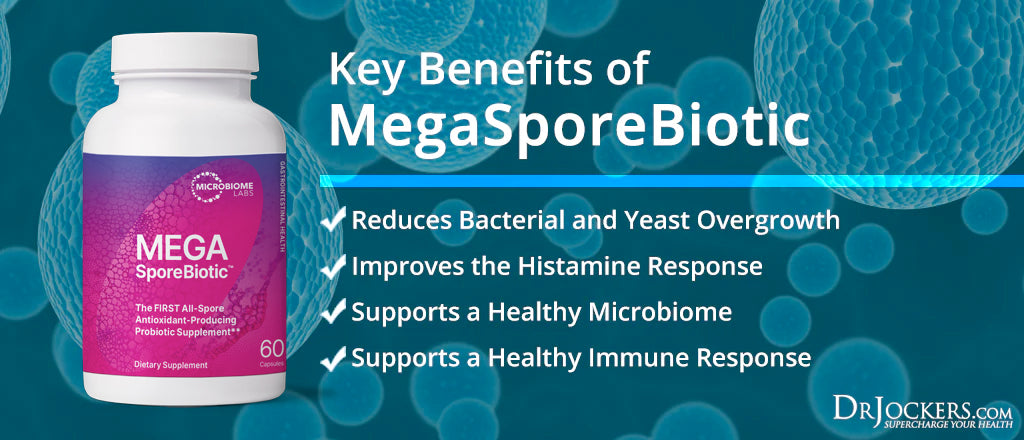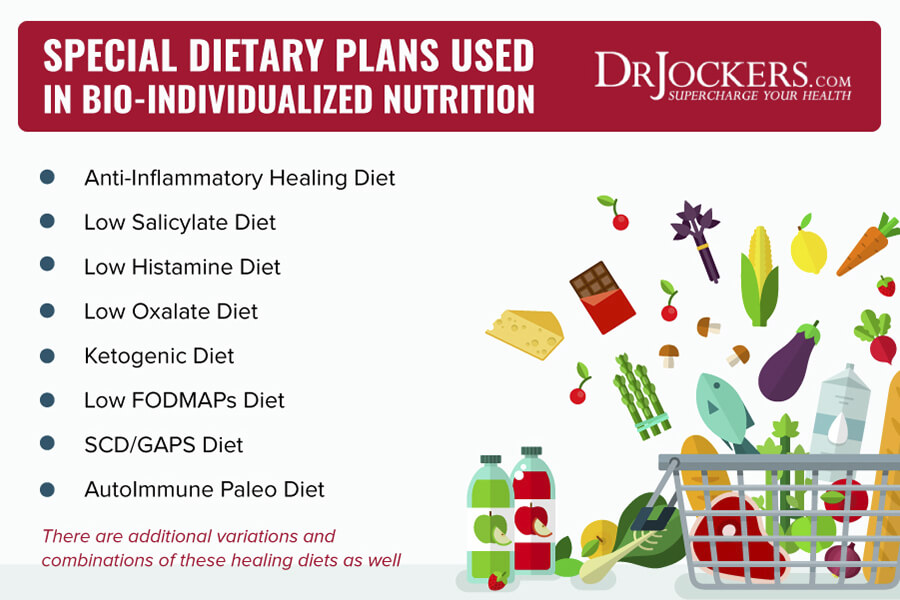 Salicylate Sensitivity: Major Symptoms and What Foods to Avoid
Salicylate Sensitivity: Major Symptoms and What Foods to Avoid
Many people struggle with unidentified food and chemical sensitivities. You have probably heard of intolerances to gluten, dairy, and nuts, but there is a little-known compound called salicylates that can cause a variety of symptoms in sensitive individuals.
Salicylate sensitivity is an example of how biochemically a food may be a superfood for one person and toxic to another. Salicylates are found in many healthy foods, including herbs and spices, fruits and vegetables, as well as coffee, tea, honey, and nuts. These compounds are produced by plants to defend against harmful elements like insects, disease, and fungus.
A salicylate sensitivity can be hard to diagnose. An elimination diet, which reduces or eliminates foods high in salicylates can be helpful. During the elimination period, it is important to focus on healing the gut to improve your tolerance to these otherwise healthy foods. The goal is to be as restrictive as possible, while removing foods that may be harming your body.
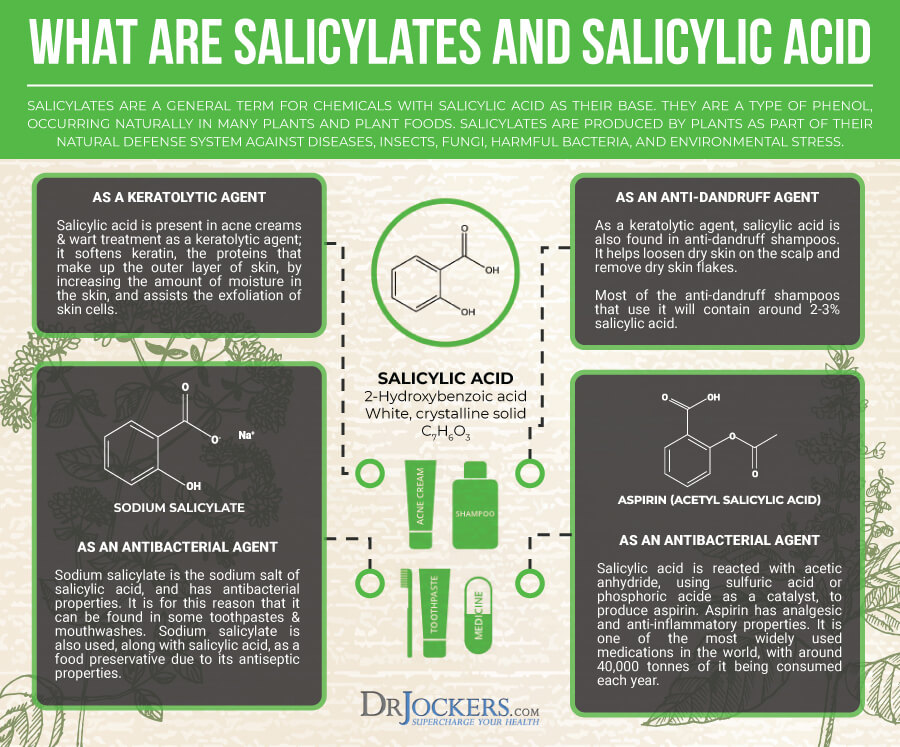
What Are Salicylates?
Salicylates are a general term for chemicals with salicylic acid as their base. They are a type of phenol, occurring naturally in many plants and plant foods. Salicylates are produced by plants as part of their natural defense system against diseases, insects, fungi, harmful bacteria, and environmental stress.
Salicylic acid is used as an ingredient in synthetic salicylates, including aspirin (acetyl salicylic acid) and other medications. It is found in artificial colors, flavors, and preservatives. Additionally, many personal care products, such as perfumes, lotions, toothpaste, mouthwash, and shaving creams, contain salicylates.
Plant foods high in salicylates contain vitamins, minerals, and other healthy plant compounds. However, for people who are sensitive to salicylates, these otherwise healthy foods can be problematic.
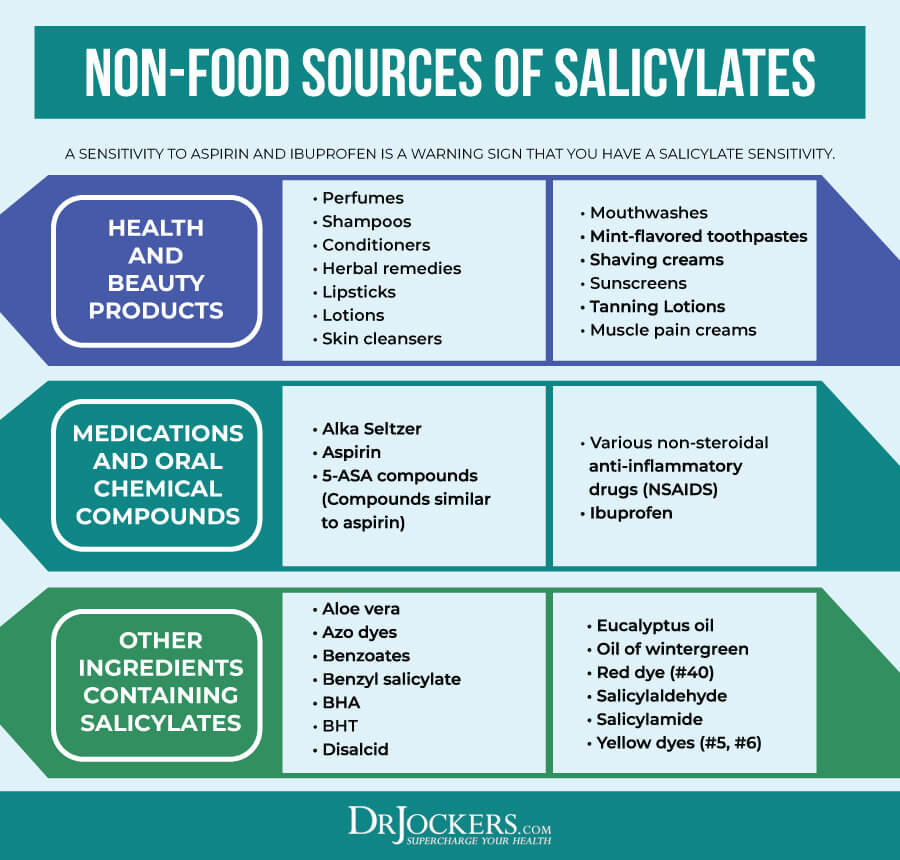
Common Symptoms of Salicylate Sensitivity
Most people can safely consume foods containing salicylates or use products with salicylates. However, even small amounts of salicylates can cause an adverse reaction in people with salicylate sensitivity. The tolerated amounts of salicylates can vary from person to person. Salicylates also have a cumulative effect in the body and can build up over time.
Salicylates stimulate the central nervous system in most people that react to them. There can be physical and/or behavioral reactions to salicylates. These reactions can occur immediately after consumption and up to 48 hours later, depending on the person’s immune response.
Salicylate sensitivity is often misdiagnosed due to the range of symptoms. Possible symptoms of salicylate sensitivity include (1):
- Hyperactivity
- Memory loss
- Poor concentration
- Red cheeks and ears
- Respiratory issues (nasal polyps, sinusitis, rhino conjunctivitis)
- Asthma
- Headaches
- Swelling of hands and feet
- Skin rashes, hives, or itchy skin
- Eczema
- Diarrhea
- Stomach pain
- Night or day wetting
- Irritability
- Defiant behavior
- Aggression
- Cries easily
- Emotionally sensitive
- Sleeping issues
Many conditions are associated with salicylate sensitivity, including asthma. In fact, up to 23% of people with asthma have a salicylate sensitivity (2).
Salicylates activate mast cells, and intolerances are linked to idiopathic mast cell activation syndrome (3). People with food allergies and bowel conditions like inflammatory bowel disease have also been shown to be more likely to be intolerant to salicylates (4).
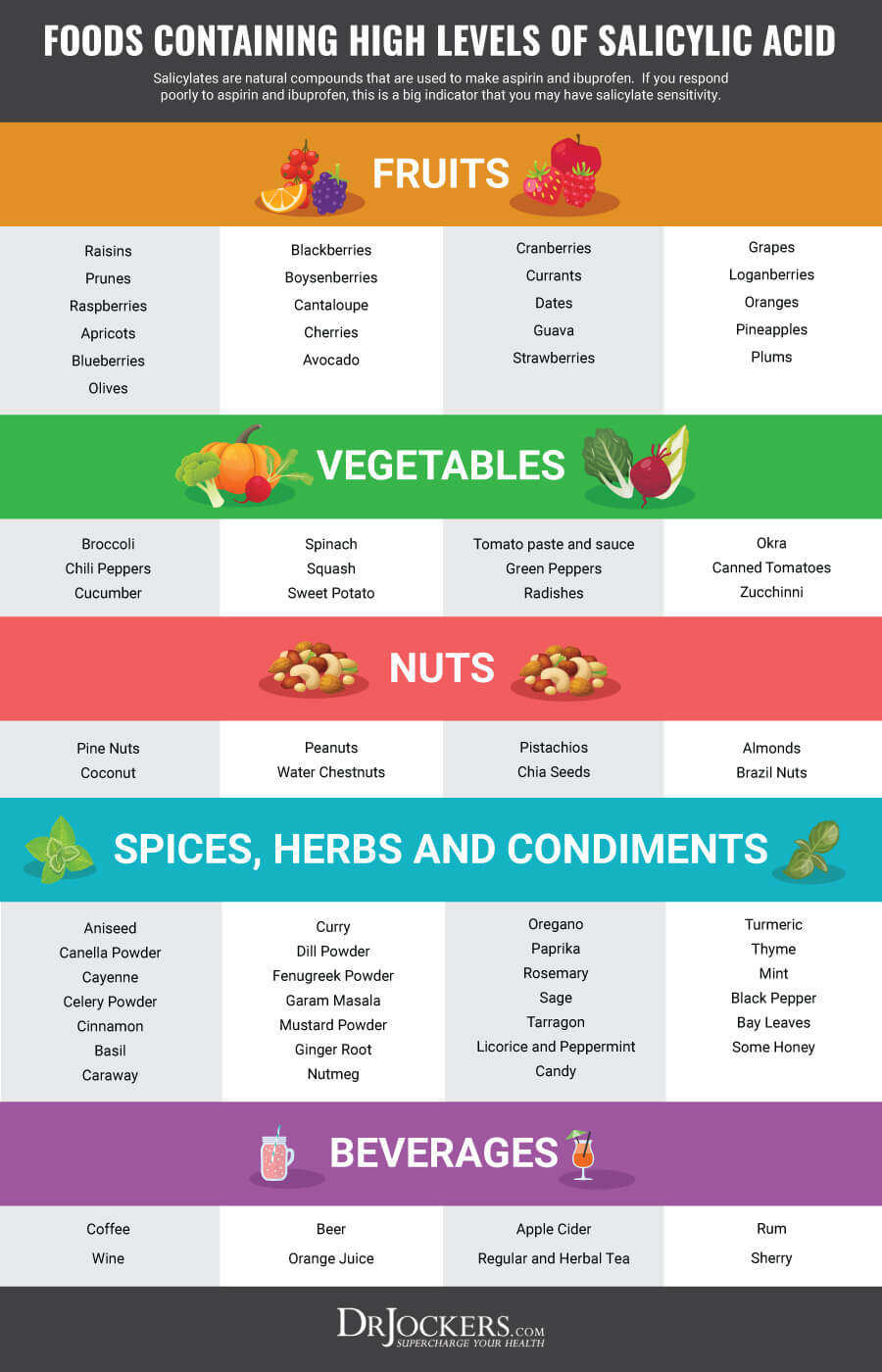
Foods High in Salicylates
Salicylates are found in a variety of foods, including many healthy foods. Different factors influence the salicylate content of a food, including the soil the food is grown in, whether the food is cooked or raw, canned or fresh, with or without peel, and more (5).
The foods highest in salicylates include:
- Vegetables: cucumbers and pickles, corn (canned, creamed), peppers (chili and green), radishes, spinach, tomatoes (canned, sauce, and paste), zucchini with peel, mushrooms (canned), broccoli, okra, sweet potatoes, squash, endive, radishes, seaweed
- Fruit: dried fruit (dates, raisins, prunes, currants), apples, apricots, avocados, berries (blueberries, blackberries, boysenberries, raspberries, strawberries, cranberries, loganberries), cantaloupe, cherries, grapes, nectarines, peaches, oranges, citrus, olives, pineapple, plums, guava
- Meat/Animal products: any processed meats with preservatives and/or additives, such as sausage, bacon, ham, hot dogs, lunch/deli meats
- Fats: olive oil, coconut oil
- Nuts/Seeds: most nuts and seeds are moderate to high in salicylates; the highest are almonds, water chestnuts, and chia seeds
- Grains/Starches: corn flour and polenta, cornmeal, maize
- Legumes: peanuts
- Herbs and Spices: curry, aniseed, cayenne, dill, ginger, allspice, cinnamon, clove, mustard, cumin, oregano, tarragon, turmeric, paprika/capsicum, thyme, rosemary, celery powder, garam masala, sage, mint, wintergreen, black pepper, bay leaves, basil, caraway, ginger root, chili powder
- Beverages: tea, coffee, rum, wine, cordials, cider, cola drinks
- Sugars: honey, corn syrup
- Condiments: ketchup, mustard, pickled products, commercial gravies and sauces, Worcestershire sauce, wine vinegar, soy sauce, cider vinegar
- Other: artificial food colorings, artificial flavors, artificial sweeteners, preservatives (BHA, BHR, TBHQ)
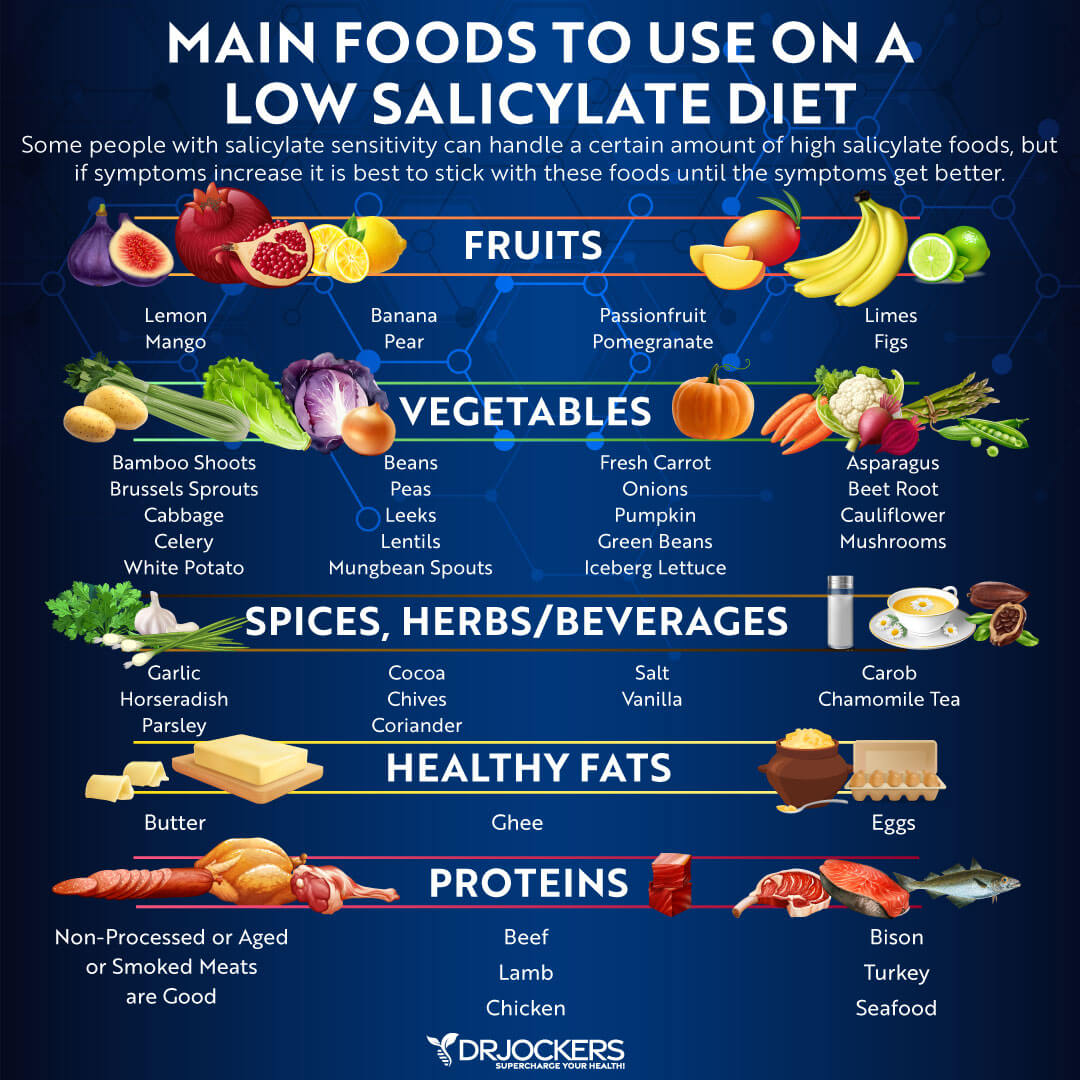
Causes of Salicylate Sensitivity
Salicylate sensitivities are not fully understood by scientists. However, the following factors appear to play a role:
1. Poor Sulfation and Salicylate Sensitivities
People with poor sulfation commonly have salicylate sensitivities. Sulfation is a biochemical pathway that aids in hundreds of different processes in the body, including the breakdown of phenols. Sulfation affects cellular respiration, detoxification, digestion, and gut integrity.
Foods high in salicylates and other phenols need to be sulfated in the phase 2 liver detoxification pathway. The Phenol Sulfotransferase (PST) enzyme needs sulfates to break down phenols and amines.
If the sulfation pathway is not functioning well, a person may not be able to process salicylates and other phenolic compounds quickly enough. These compounds can build up in the system and cause symptoms of salicylate intolerance.
Normalizing your sulfate levels may help improve salicylate intolerance. One of the best strategies for this is Epsom salt baths. Epsom salts supply sulfur in the sulfate form directly through your skin and aid in sulfation biochemistry.
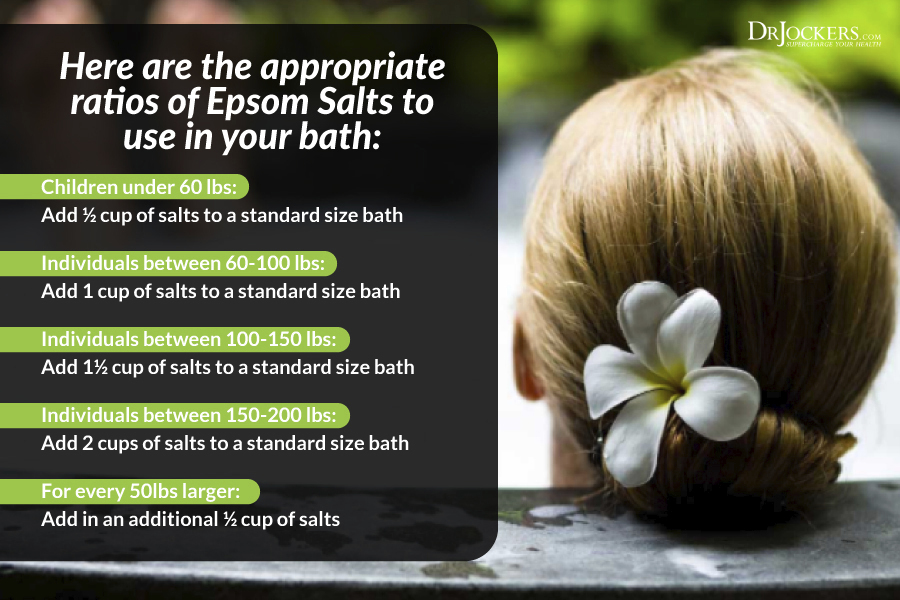
2. Overproduction of Leukotrienes
With salicylate intolerance, there is an altered metabolism of arachidonic acid and eicosanoids. This leads to a predominance of leukotrienes over prostaglandins. Leukotrienes are inflammatory mediators that have been linked to many conditions.
There is also activation of basophils and eosinophils, macrophages, mast cells, platelets, and lymphocytes in salicylate intolerant individuals. These cells play an essential role in the symptoms of salicylate sensitivity (3). Taking the long-chain omega 3 fatty acids EPA and DHA found in cold water fish and fish oils can help reduce this inflammatory process.
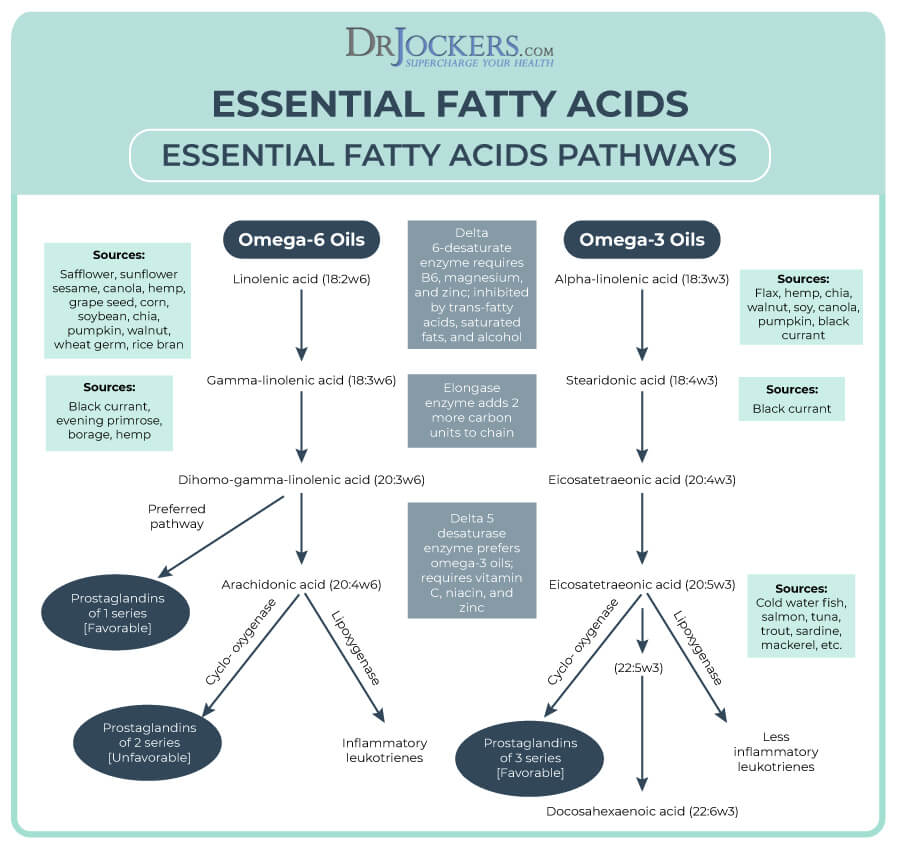
Relationship to Amines and Glutamates
Foods high in amines and glutamates are processed similarly by the body as salicylates. Some people react to salicylates only, while others may react to these additional compounds. Many high salicylate foods are also high in amines and glutamates.
Amines
Amines come from protein breakdown or fermentation. Large amounts are present in cheese, chocolate, wine, beer, yeast extracts, and fish products (anchovies, sardines, tuna, fish oil supplements). They are also found in certain fruits and vegetables such as bananas, avocados, and tomatoes.
Histamine is an amine that is produced by your cells and found in foods. Histamine is an inflammatory molecule that helps regulate immunity. As part of the immune response, histamine is produced by basophils and by mast cells found in connective tissue.
Histamine intolerance is a type of food intolerance. Like salicylates, it is a good example of how biochemically a food may be healthy for one person and harmful to another.
An individual with histamine intolerance has an exaggerated reaction to high histamine foods. Consuming these foods can lead to chronic health issues such as allergies, asthma, sinus problems, eczema, and more.
The causes of the exaggerated reaction to high histamine foods could be insufficient DAO enzyme production (needed for proper histamine metabolism) or elevated histamine levels. A low histamine diet can be extremely beneficial for people with a histamine intolerance. For more information about histamine intolerance and how to know if you could be suffering, read this article.
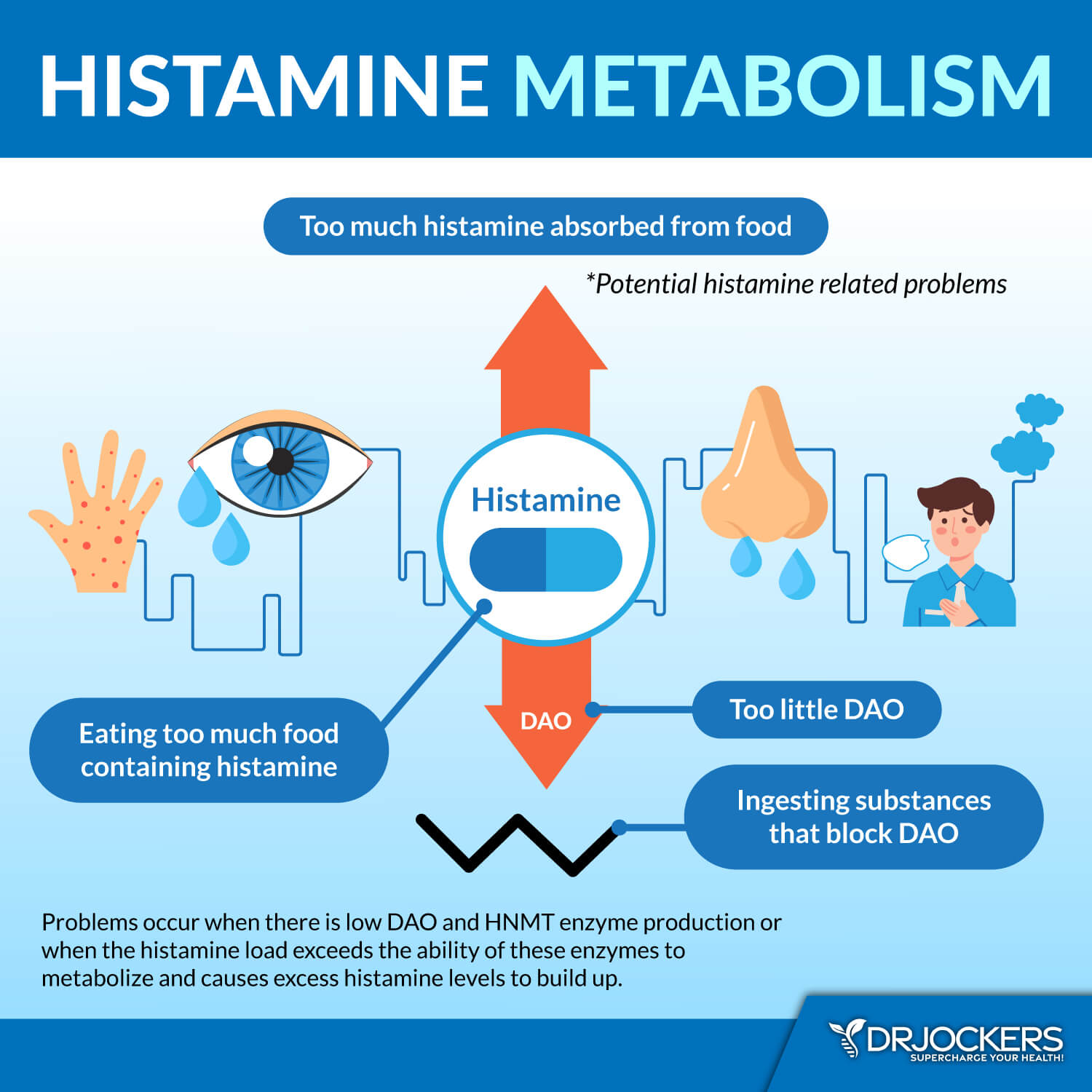
Glutamate
Glutamic acid is an amino acid found in both plant and animal proteins. Glutamate is the most common form of glutamic acid in our bodies. It is the most abundant neurotransmitter in the brain. Excess glutamate is problematic for some people. The most common symptoms associated with glutamate sensitivity include headaches, trouble sleeping, anxiety, and brain fog.
Health concerns with glutamate are with free glutamate rather than bound glutamate. Free glutamine is not bound to other amino acids and is absorbed much more rapidly.
Monosodium glutamate (MSG) is a form of free glutamate that is present in almost all processed foods. It is a synthetic chemical added to processed foods to make them more palatable. In addition to MSG, free glutamates may be listed as monopotassium glutamate, yeast extract, anything “hydrolyzed”, calcium caseinate, autolyzed yeast, textured protein, gelatin, soy protein, whey protein, carrageenan, bouillon and broth, maltodextrin, and more.
Natural sources of free glutamate are cured foods, fish sauce, soy sauce, soy protein, mushrooms, ripe tomatoes, broccoli, peas, walnuts, grape juice, bone broths and meats cooked for long times, malted barley used in breads and beer, wheat gluten, and dairy casein. Avoiding these foods is beneficial for anyone with a glutamate sensitivity.
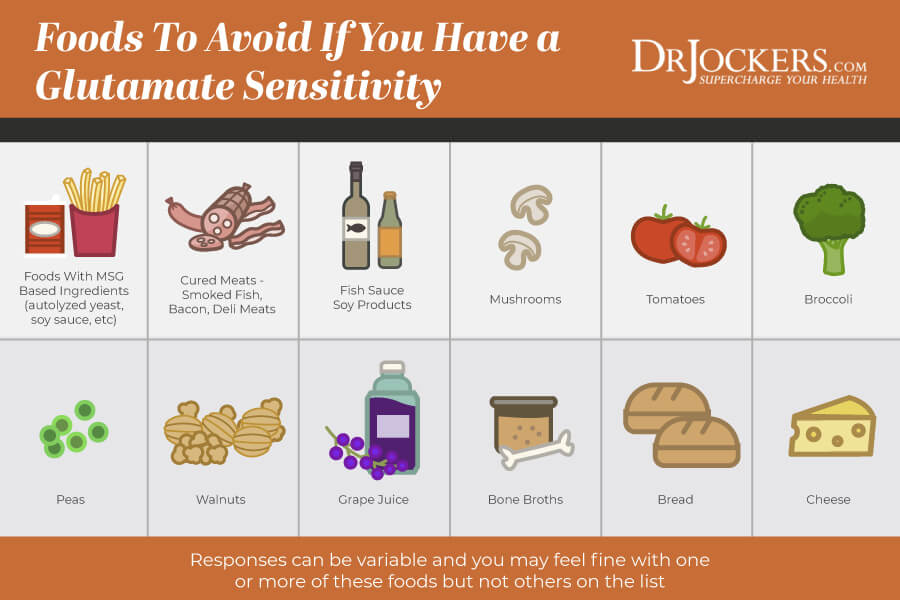
Glutamate to GABA Conversion
Glutamate is the precurser to another neurotransmitter called GABA which has a calming affect on brain and body. Normally, glutamates will be processed in the body and create a balance of the excitatory glutamic acid and the inhibitory GABA. People with glutamate sensitivity have poor conversion of glutamate to GABA.
These individuals often need large doses of activated B6 (P-5-P) around 50 mg – 2-3 times daily and magnesium (500-1000 mg daily) to help reduce this sensitivity and improve their glutamate to GABA ratio.
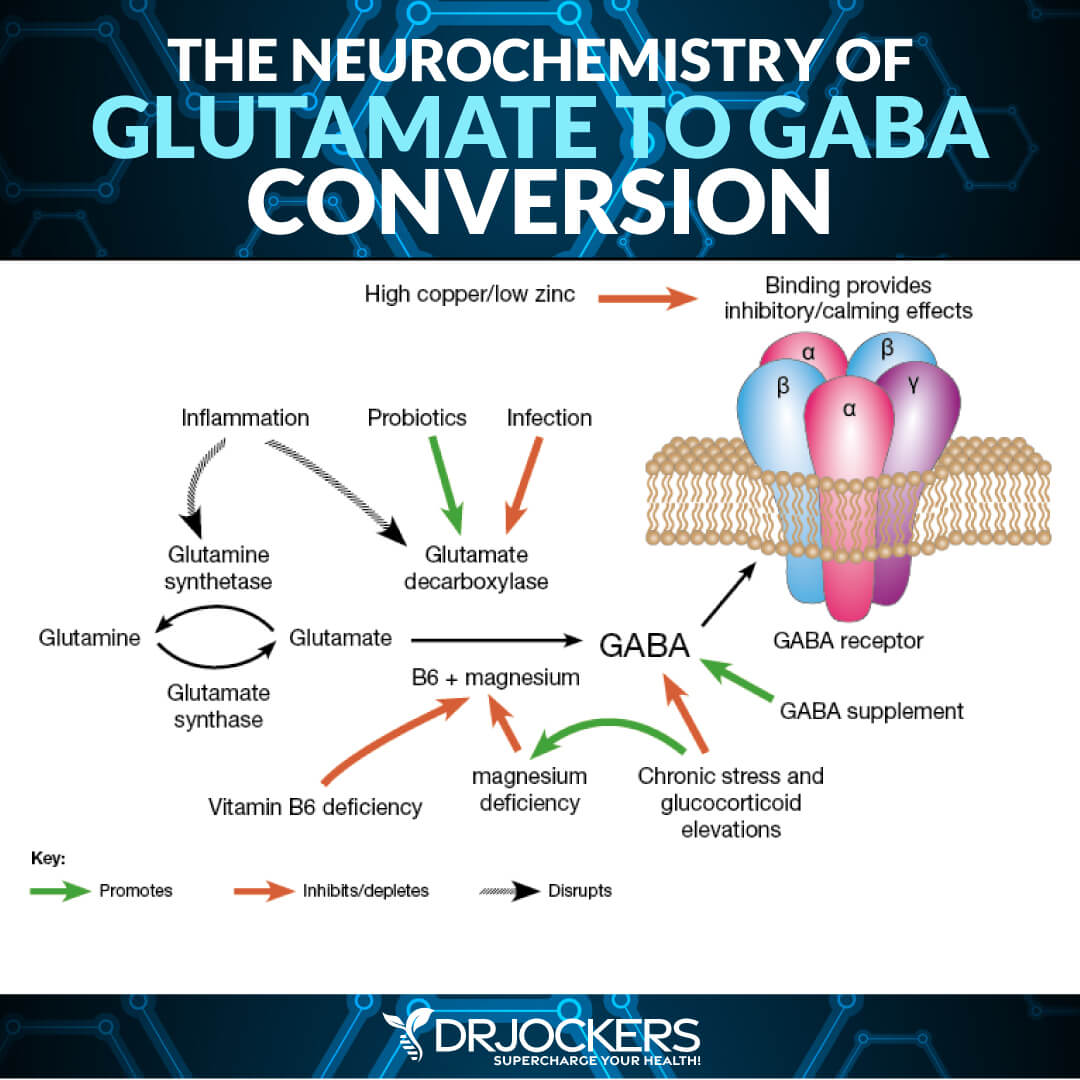
How to Implement a Low Salicylate Diet
A low salicylate diet eliminates or limits foods high in salicylates for 4-6 weeks. Once your gut symptoms have improved, you can reintroduce foods that contain salicylates. You should slowly reintroduce these foods, one at a time, waiting at least 72 hours before trying another food.
It is important to keep a journal during the entire process to document how you are feeling as you eliminate and reintroduce the foods. You want to note any reaction or symptom that improves with elimination or worsens/reappears with reintroduction. This helps you to identify which of the high salicylate foods you are sensitive to and how much of a food triggers your symptoms.
Many high salicylate foods are nutrient dense, so it is important not to restrict these foods for the long-term. The goal is to reintroduce as many healthy foods as possible back into the diet. After you have determined how foods high in salicylates cause symptoms, you can avoid only those foods that trigger your symptoms. There may only be a few that you need to avoid.
This short-term elimination period reduces the burden on the body and will often decrease or eliminate symptoms. During this elimination period, it is important to work on healing leaky gut, balancing the microbiome, and replenishing nutrients.
You should also avoid aspirin and other medications that contain salicylates, along with any personal care or other products that contain salicylates. Avoiding non-food sources of salicylates is an important step in improving from salicylate sensitivity.

Strategies to Heal the Gut During the Elimination Period
While you are limiting or eliminating salicylates, you should use liquid nutrition, fasting strategies, and targeted supplementation to heal your gut. When the gut lining is inflamed and damaged, it is more porous than it should be.
This allows undigested food molecules, bacteria, and fungi (and their toxins) to enter the bloodstream, causing inflammation and an overactive immune response. Healing your gut may help to improve your salicylate sensitivity. Many people are able to add foods with salicylates back into their diets after they have avoided salicylates for an extended time.

Liquid Nutrition
Digesting solid foods creates significant stress on the digestive system, irritates the gut lining, and leads to inflammatory processes. Consuming liquid nutrition with low salicylate green juices, broths, and smoothies can be very healing for the digestive system.
Liquid nutrition is easier to digest, allowing our bodies to conserve energy used in digesting, processing, and assimilating solid foods. The body can use this energy for healing and detoxification.
A fantastic protein powder to include in your liquid nutrition smoothie is Gut-Liver Cleanse Protein. This protein powder is a critical part of a gut-healing protocol. It provides high-quality, hypoallergenic amino acids and powerful antioxidants that help to improve liver function and strengthen the gut lining. Additionally, Gut Healing Protein contains 26 grams of protein and 0 grams of sugar in each serving.

Intermittent and Extended Fasting
Fasting has incredible healing benefits (6). It reduces inflammation and allows the digestive system to heal. Intermittent or extended fasting can be used to improve gut health.
Intermittent fasting is eating foods within a certain window of time each day. It is divided into the building or feeding window, when you consume foods, and the fasting or cleansing window, when you are going without food. The best way to start fasting is by doing a simple fast, consuming only water for the 12 hours between dinner and breakfast.
For greater healing benefits, you can do extended fasts for over 48 hours. With extended fasting, your body can heal and repair cells, tissues, and organs on a higher and deeper level. This is one of the most powerful healing tools you can utilize for a quick health transformation. For more information on extended fasting and how to break an extended fast, check out this article.
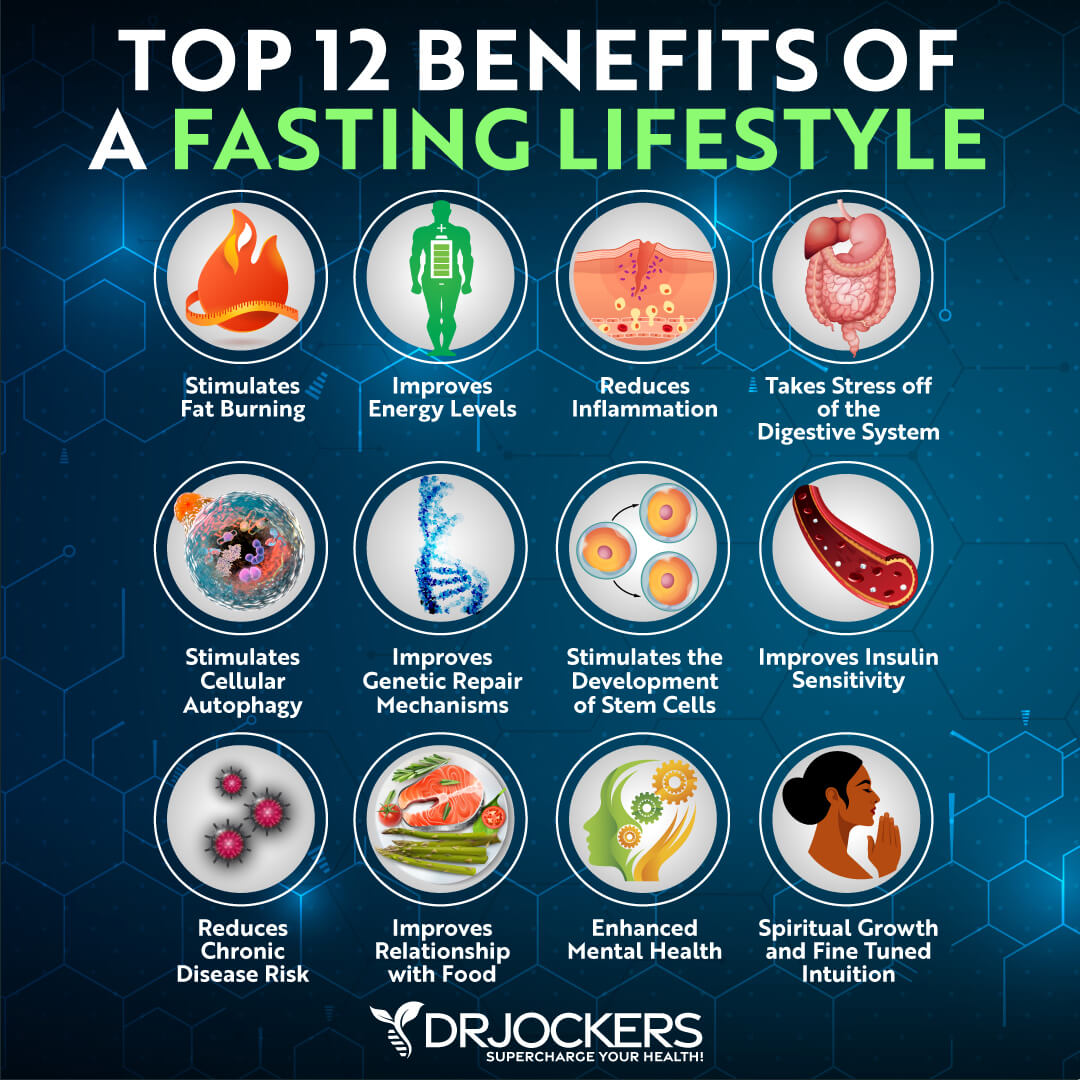
Gut Enhancing Supplements
Supplementing with nutrients, amino acids, and probiotics can boost gut healing. Targeted supplementation helps to repair the gut lining, strengthen the gut mucosa, and balance the gut microbiome. These support nutrients can help you reduce your salicylate sensitivity and other food sensitivities.
Mega IgG 2000
The immunoglobulin blend in Mega IgG2000 strengthens gut structure and physiology, detects and removes pathogenic agents and their toxic by-products, as well as assists in maintaining the gut immune system and your overall wellness.
Protecting the intestinal barrier is key in the prevention of autoimmune diseases, IBD, metabolic syndromes like diabetes, and controlling the immune reaction to food allergens.
Probiotics
To improve the balance of your gut flora you should add probiotics. Probiotics are beneficial microorganisms (bacteria and yeasts) that keep your gut and body healthy. They are similar to the microorganisms that naturally live in our bodies.
A good probiotic for people who struggle with food sensitivities is MegaSporeBiotic. This probiotic contains a unique blend of 5 Bacillus spores designed to protect its human host. In addition to food sensitivities, this broad-spectrum spore forming probiotic is good for individuals with poor oxalate metabolism and histamine intolerance.
Collagen
Collagen is the most abundant protein in the body and a key component of all connective tissues. Multi-collagen protein provides key amino acids necessary for healthy gut lining, joints, skin, and overall healing.
Collagen can be an issue for people with a significant glutamate sensitivity, but for most people with salicylate sensitivities, it is very helpful. For more information on the many ways that collagen can improve your gut and overall health, check out this article.
Omega-3 Fatty Acids
Improving the ratio of Omega-6 to Omega-3 fatty acids may improve salicylate sensitivities. The ideal ratio is 4:1 to 2:1 omega-6 to omega-3. Higher ratios cause inflammation.
Supplementing with omega-3 fatty acids has been shown to be a safe and effective treatment for salicylate intolerance (7). Cod Liver Oil is a high-quality, superior source of omega-3 fatty acids, providing the long-chain EPA and DHA fatty acids. The Nordic Natural brand we use also has 1000 IU’s of vitamin D and a good dose of vitamin A retinol to help heal the gut and immune system.
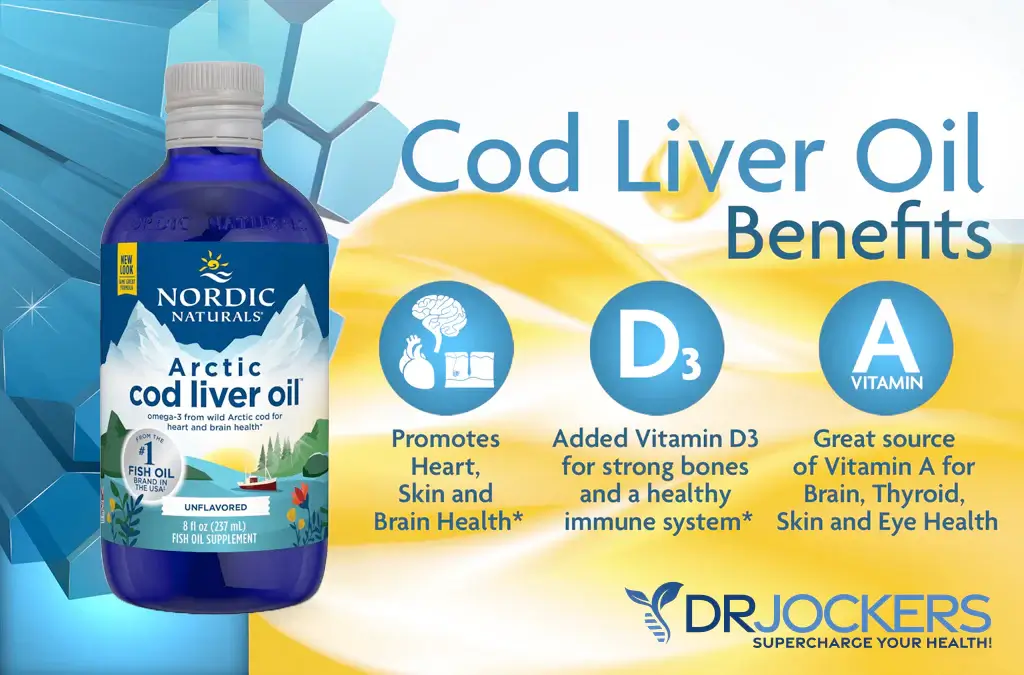
Testing for Salicylates
Salicylate sensitivity can be hard to diagnose. Cravings for salicylates along with symptoms of salicylate sensitivity should be considered. There is also a marker on the Organic Acids Test (OAT) that may indicate salicylate sensitivity.
The OAT is a comprehensive test that gives metabolic insight into a person’s overall health. There are over 70 markers on the organic acids test, including vitamins and antioxidants, oxidative stress, energy production, detoxification, neurotransmitter levels, oxalates, and intestinal yeast and bacteria.
The marker on the OAT for salicylates is 2-Hydroxyhippuric Acid (marker 61). 2-Hydroxyhippuric Acid is a conjugate of glycine and hydroxybenzoic acid (salicylic acid). Elevated levels of this acid could be due to high aspirin or aspartame usage, dietary salicylates, or from GI bacteria converting tyrosine or phenylalanine to salicylic acid.
Elevations in 2-Hydroxyhippuric may indicate poor phase II liver detoxification, which depends upon glycine. Supporting liver detoxification pathways, reducing consumption of high salicylate foods, and/or limiting aspirin and aspartame are important when this marker is elevated.
Final Thoughts on Salicylate Sensitivity
Salicylates are otherwise healthy foods that may be problematic for certain people. Understanding the different sources and types of foods that contain salicylates can help you identify which foods cause symptoms for you.
If you are having symptoms of salicylate sensitivity, it would be prudent to remove the high salicylate foods from your diet for around 4 weeks. During this time, work on healing your gut and improving digestion and nutrient absorption. Then slowly reintroduce these foods to determine if you are able to tolerate salicylates.
If you are dealing with a lot of health issues, I always recommend working with a functional health practitioner who can help you navigate this journey through bio-individualizing your nutrition plan and healing strategies. Be sure to check out this article on Bio-Individualized Nutrition practices.
Inflammation Crushing Ebundle
The Inflammation Crushing Ebundle is designed to help you improve your brain, liver, immune system and discover the healing strategies, foods and recipes to burn fat, reduce inflammation and thrive in life!
As a doctor of natural medicine, I have spent the past 20 years studying the best healing strategies and worked with hundreds of coaching clients, helping them overcome chronic health conditions and optimize their overall health.
In our Inflammation Crushing Ebundle, I have put together my very best strategies to reduce inflammation and optimize your healing potential. Take a look at what you will get inside these valuable guides below!

